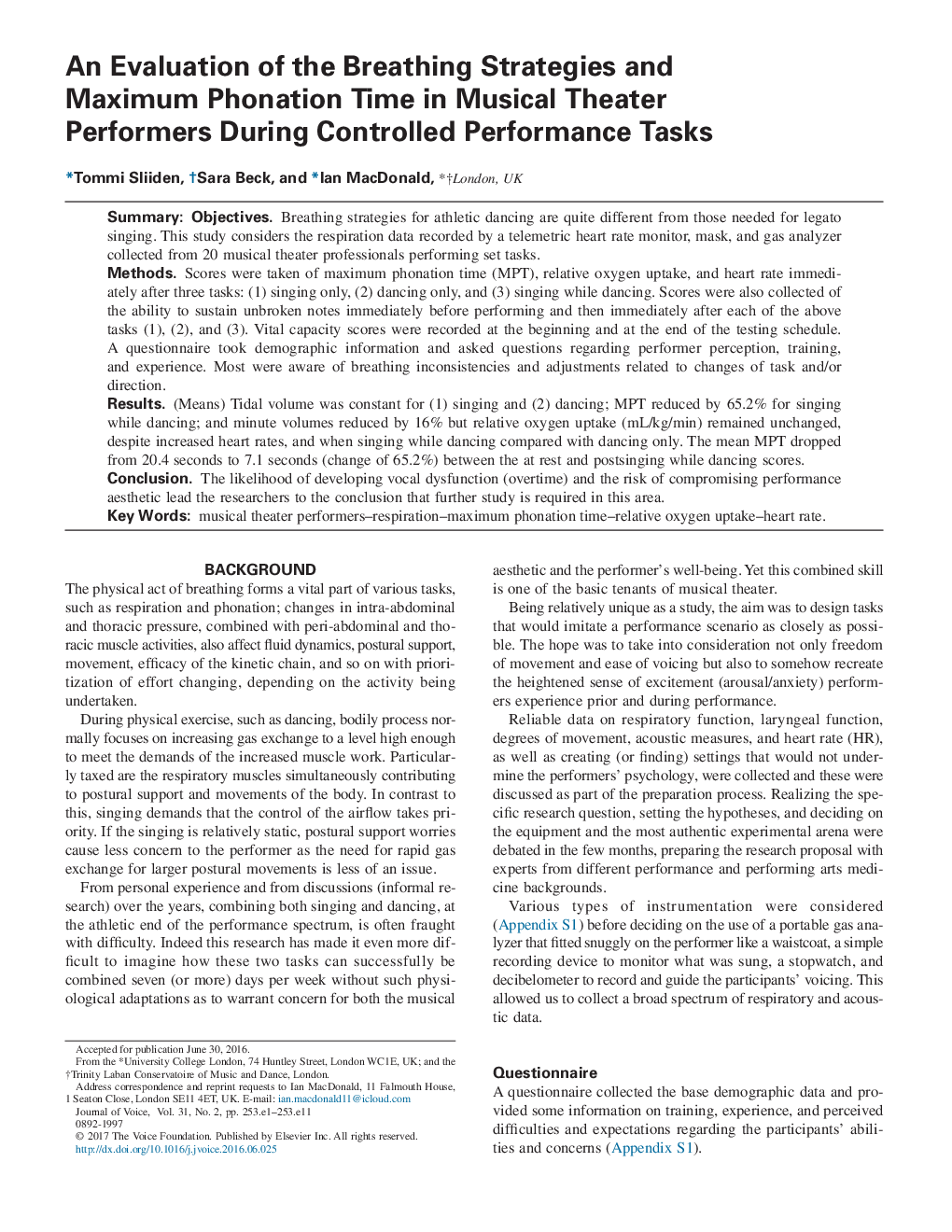| Article ID | Journal | Published Year | Pages | File Type |
|---|---|---|---|---|
| 5124431 | Journal of Voice | 2017 | 11 Pages |
SummaryObjectivesBreathing strategies for athletic dancing are quite different from those needed for legato singing. This study considers the respiration data recorded by a telemetric heart rate monitor, mask, and gas analyzer collected from 20 musical theater professionals performing set tasks.MethodsScores were taken of maximum phonation time (MPT), relative oxygen uptake, and heart rate immediately after three tasks: (1) singing only, (2) dancing only, and (3) singing while dancing. Scores were also collected of the ability to sustain unbroken notes immediately before performing and then immediately after each of the above tasks (1), (2), and (3). Vital capacity scores were recorded at the beginning and at the end of the testing schedule. A questionnaire took demographic information and asked questions regarding performer perception, training, and experience. Most were aware of breathing inconsistencies and adjustments related to changes of task and/or direction.Results(Means) Tidal volume was constant for (1) singing and (2) dancing; MPT reduced by 65.2% for singing while dancing; and minute volumes reduced by 16% but relative oxygen uptake (mL/kg/min) remained unchanged, despite increased heart rates, and when singing while dancing compared with dancing only. The mean MPT dropped from 20.4 seconds to 7.1 seconds (change of 65.2%) between the at rest and postsinging while dancing scores.ConclusionThe likelihood of developing vocal dysfunction (overtime) and the risk of compromising performance aesthetic lead the researchers to the conclusion that further study is required in this area.
